
Your Cart
History of Rogan Painting and its creators
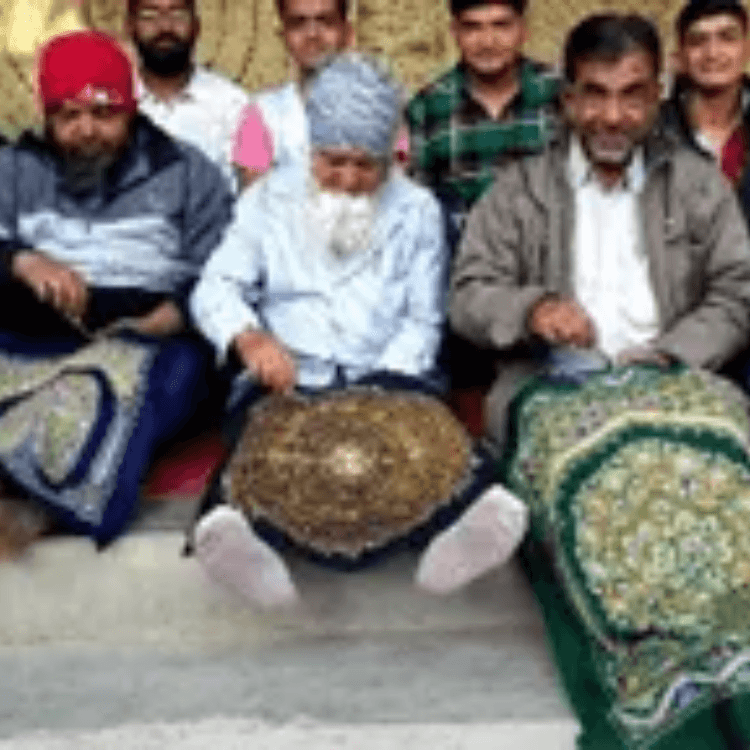
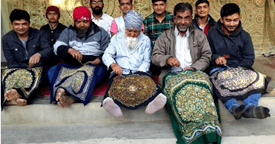
As travellers, whenever we visit the handlooms and check the handicrafts of a new place that we come to, we often tend to think that the artisans there are looting us. Since we are tourists, we feel that our lack of local experience can make us vulnerable to a bad deal. “This piece of art is so expensive!” – said every traveller ever.
Of course, some connoisseurs would buy expensive art pieces because they see something others might not. Common folk judge the artwork on how it is priced. We try to bargain to get the best price and justify our definition of value.
In today’s age of machines and digital printing, we fail to recognize that even the simplest-looking sarees we wear and buy for our loved ones can take a weaver about six months to put together. Authentic and handmade crafts require the artisans to follow tedious processes and complete dedication for long periods on each piece.
Rogan art is one such art form too. When the artisans mention a four-digit figure for a piece made using Rogan, travellers tend to find it overpriced. But despite its high value, why is Rogan, a technique so intricate, not doing so well today? Let’s find out.
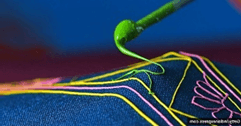
WHAT IS ROGAN ART AND WHERE DOES IT COME FROM? DECODING THE HISTORY OF ROGAN ART PAINTINGS
The word ‘rogan’ comes from the Persian language which means oil or varnish. You may have heard the term several times in Parsi and Mughlai cuisines like rogan josh, or even mention of oils like rogan badam oil etc. Here, Rogan art is a form of cloth-based painting which is created using vegetable dyes and pigments mixed with boiled natural oils.
Women in Gujarat would buy Rogan-painted fabric to decorate and cover their household upholstery. Later in the 20th century, many easy-to-work-with fabrics and quick-to-produce textiles replaced the fame of Rogan art; because the oil-based designs then started to seem quite expensive.
THE RISE AND FALL OF ROGAN ART: WHY IS IT PRACTICED BY JUST ONE FAMILY IN NIRONA, GUJARAT TODAY?

The Khatri family has been in association with Rogan art paintings ever since it originated in Gujarat. After the devastating earthquake in the Kutch region of Gujrat in 2001, the government wished to quickly bring back the region’s economy on track. Tourism was one sector being promoted in full swing to get the economy going. Thus, many charitable trusts, non-profit groups, and local authorities came forward to boost the sales of Rogan art. They helped the Khatri family and their art form to reach out to urban areas. The Khatri Family has now won multiple National and International awards and recognitions for keeping such a magnificent art form alive for all these years.
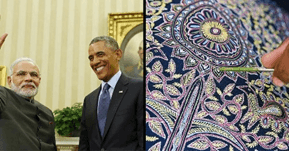
The Khatri family recognized the need to evolve their art to stay relevant in times of changing trends. They have developed innovative designs and newer products such as bags, wall hangings, cushions, pillow covers, tablecloths, etc.
This artisanal family has risen to such fame today that once as many as 400 tourists attend their workshops every day, causing a traffic jam in Nirona. The Khatris have also taken to teaching some women of their village the art of Rogan painting. By the end of 2015, twenty women of Nirona joined hands with the Khatri family to teach others about Rogan art.
However, the pandemic has been brutal to the artisans and small businesses, and a huge blow has been thrown at the Khatris’ business as well. The situation has worsened to such an extent that today, only 6 members of Abdul Gafur Khatri’s family have chosen to keep the practice of the traditional Rogan painting.
THE PROCESS OF ROGHAN PAINTINGS AND ART-MAKING
The rogan or oil used in the art is castor oil. Castor oil is boiled for two days, and natural pigments made from vegetables are added along with binding agents. The paint formed has a beautiful vibrant shine to it. The oil in the paint acts as a natural preservative. This oil-based paint is then used to paint on a dark-coloured cloth using a stylus or a block print technique. The ‘Tree of Life’ is the most popular motif of the Khatris. You can find vibrantly coloured Rogan paintings that showcase floral motifs, animals, and local folk art too.
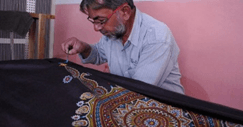
Rogan paintings are a time-consuming affair and take a lot of focus to make intricate designs. It may appear as a simple cloth painting but organic oil-based paints made out of castor oil are expensive. Also, the process is a lot more tedious than it appears. Artisans like the Khatri family pay a huge cost to keep this art form alive. We, as travellers, must keep traditional art forms like the Rogan paintings alive by acknowledging the dedications of the craftsmen, identifying their true value, and buying their work as treasured souvenirs.